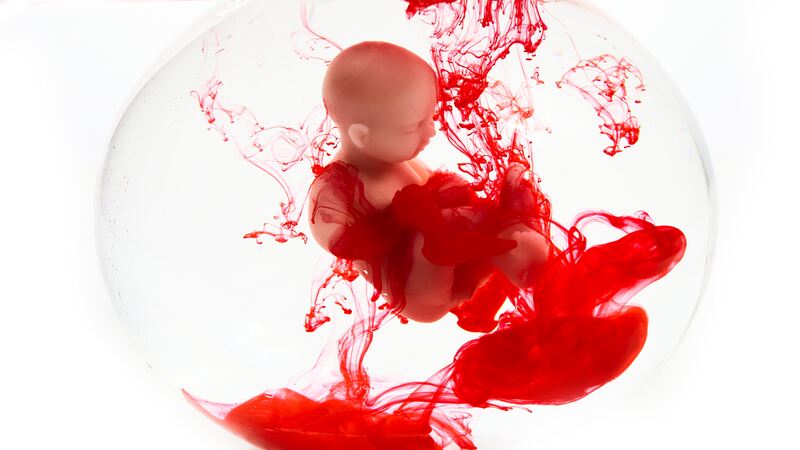 D and C is a surgical procedure in which the cervix is dilated and with the help of curettage the abnormal endometrial tissues are taken out for further management. The procedure can be done both diagnostically or therapeutically. D and C is the procedure which is done post abortion if there are retained products of conception, again as a therapeutic procedure for heavy menstrual bleeding patients. (1)
D and C is a surgical procedure in which the cervix is dilated and with the help of curettage the abnormal endometrial tissues are taken out for further management. The procedure can be done both diagnostically or therapeutically. D and C is the procedure which is done post abortion if there are retained products of conception, again as a therapeutic procedure for heavy menstrual bleeding patients. (1)
This article explains in detail the procedure of D and C, its advantages, and its pain score, which will help the readers understand more about the procedure.
What is a D and C Procedure?
A Dilation and Curettage or D&C is a short surgical procedure, which is typically performed if you have had a miscarriage after the first trimester. Here, dilation means to open the cervix and curettage means removing the remaining contents from the uterus. Basically, after a miscarriage, curettage is done where the uterine wall is scraped with an instrument or using a suction curettage.(2)
Is a D&C imperative After a Miscarriage?
The objective of this procedure is to prevent any haemorrhage and infection. If the miscarriage happens in early pregnancy, then the body expels the fetal tissue by itself; and this procedure isn’t required. But if your body does not expel the tissue, then a D&C needs to be performed to stop the bleeding and avoid any infection.(3)
Why Would A Person Need A D&C?

D N C is a procedure which can be done for both prophylactic and therapeutic reasons. Post miscarriage if there are retained products of conception then dilatation and curettage is needed to prevent infection to the patients.
In a patient with irregular and heavy menstrual bleeding , this procedure is done to stop the bleeding and also to send an endometrial sample to histopathology for further management.(4)
If a patient has any endometrial pathology like endometrial polyp then hysteroscopic polypectomy with dilatation curettage is advised.
How is the D&C procedure performed?
The D&C procedure could be performed in a hospital or a surgical center. Usually, a sedative needs to be given first as that would help you relax and calm down the anxiety you may be experiencing. Mostly, general anesthesia is used before this procedure but in some cases, IV or paracervical anesthesia could also be used. Therefore, it’s not a great idea to drive to the hospital alone.(5)
- Some antibiotics are given intravenously or orally to avoid any infection.
- The cervix is examined to check if it’s open.
- Dilators or narrow instruments are used to open the cervix if it is not open. This needs to be done to allow the surgical instruments to go through to perform the procedure. An instrument called – speculum is placed on the mouth to keep the cervix open.
- Then the tissue is removed and might be sent to a pathology for testing.
- Once the uterus becomes firm and there is no more bleeding, you will be sent back to the recovery room.
Is the D&C procedure painful?

No, it isn’t. Once the cervix is numb or the general anesthesia has had its effect, you won’t feel any pain at all. The doctor will dilate your cervix and do the procedure. But there are some chances that you might feel some pain or cramps in the uterus when the lining is removed with a curette. However, if a local anesthesia is given, then you won’t feel anything.(6)
What Happens During The D And C Procedure?
The patient is put in a lithotomy position after taking a mild painkiller and sedative. The vaginal speculum is inserted and the cervix is dilated. With the help of curettage the endometrial layer is scooped out and sent for histopathology. This is a relatively painless procedure.(7)
What happens after this procedure?
The procedure can happen within 10 minutes, so the recovery time is also very less. The patient is kept for observation for few hours and then been discharged.in between this there are monitoring of the patient which is needed to be done. They are: (8)
- After the procedure, you will be kept in a post-anesthesia care unit to recover from the anesthesia.
- Mostly, it takes a couple of days to return to your normal schedule.
- Some anti-inflammatory medications could be recommended to take care of the mild pain or irritation.
- Using tampons or an intercourse is not a good idea for about two weeks after this procedure as that can lead to an infection.
- The follow-up completely depends on your particular case and on your surgeon. Generally, a follow-up would be scheduled within 2 to 6 weeks after the surgery.
Advantages of D and C Surgery Procedure
There are certain advantages of the D N C procedure. In abnormal uterine bleeding, this helps to diagnose the disease, it sometimes helps in diagnosing endometrial cancers.
In the case of retained products of conception post-abortion, this helps in the prevention of heavy bleeding and infection.(9)
The Risks and Complications of a D and C Surgery Procedure
Though D N C is comparatively safe procedure to deal with. But as we all know everything comes with its own set of complications. The complications are discussed below.
- There are a few risks related to anesthesia; for example, you could have some reaction to the medication or have breathing problems or nausea(10)
- There could be heavy bleeding or hemorrhage
- Infection in the uterus
- Laceration or the weakening of cervix
- Perforation or any puncture to the uterus
- Incomplete removal of the tissue or procedure could require another procedure
How Long Does It The D and C Surgery Procedure Take?
The procedure is about 10 to 15 minutes long. But the whole procedure where anesthesia is given to the patient is shifted to OT and out of it takes around 20 minutes long. The discharge procedure took a few hours after that.(11)
As this is being discussed in this article, D N C is a comparatively safe procedure and can be done on a daycare basis. But like all procedures this also comes with its own set of complications. Proper advice from the doctor is essential and should be done under trained doctors to prevent further complications. The procedure needed to be done in a healthcare facility with trained staff after proper advice from the doctor.
FAQ’s
1. Is D&C A Serious Surgery?
D N C is not a major surgery, it can be done in the operation theater within 10 to 20 minutes. But sometimes it can complicate to heavy bleeding then it can become a serious surgery.
2. What Are The Steps Of A D&C?
Under anesthesia the patient is put in lithotomy position and with the help of curettage the endometrial layer of the uterus is cuerette following dilatation of the cervix. It can be done after taking mild painkillers and sedatives.
3. How Long Is Recovery Time After A D&C Procedure?
The patient can be discharged within 4 to 6 hours post dilatation and curettage. If the patient is in a hurry then the patient can even be discharged 2 hours following the procedure.
References
- Stefano Bettocchi, Oronzo Ceci, Mario Vicino, Fiorino Marello, Luigi Impedovo, Luigi Selvaggi, Diagnostic inadequacy of dilatation and curettage, Fertility and Sterility, Volume 75, Issue 4, 2001 – https://www.sciencedirect.com/science/article/pii/S0015028200017921#
- M. Lemmers, M.A.C. Verschoor, A.B. Hooker, B.C. Opmeer, J. Limpens, J.A.F. Huirne, W.M. Ankum, B.W.M. Mol, Dilatation and curettage increases the risk of subsequent preterm birth: a systematic review and meta-analysis, Human Reproduction, Volume 31, Issue 1, January 2016, Pages 34–45, – https://academic.oup.com/humrep/article/31/1/34/2380037?login=false
- I.Z. Mackenzie, J.G. Bibby, CRITICAL ASSESSMENT OF DILATATION AND CURETTAGE IN 1029 WOMEN,
The Lancet, Volume 312, Issue 8089, 1978,- https://www.sciencedirect.com/science/article/abs/pii/S0140673678928957# - Coulter A, Klassen A, MacKenzie I Z, McPherson K. Diagnostic dilatation and curettage: is it used appropriately? British Medical Journal 1993 – https://www.bmj.com/content/306/6872/236.short#
- Richard J. Gimpelson, Henry O. Rappold, A comparative study between panoramic hysteroscopy with directed biopsies and dilatation and curettage: A review of 276 cases, American Journal of Obstetrics and Gynecology,Volume 158, Issue 3, Part 1, 1988 – https://www.sciencedirect.com/science/article/abs/pii/0002937888900117#
- Davar R, Dehghani Firouzabadi R, Chaman Ara K. Dilatation and curettage effect on the endometrial thickness. Iran Red Crescent Med J. 2013 Apr – https://pmc.ncbi.nlm.nih.gov/articles/PMC3785913/#
- David A. Grimes, Diagnostic dilation and curettage: A reappraisal,American Journal of Obstetrics and Gynecology,Volume 142, Issue 1,1982 – https://www.sciencedirect.com/science/article/abs/pii/S0002937816322761#
- Hefler, Lukas MD; Lemach, Andrea MD; Seebacher, Veronika MD; Polterauer, Stephan MD; Tempfer, Clemens MD; Reinthaller, Alexander MD. The Intraoperative Complication Rate of Nonobstetric Dilation and Curettage. Obstetrics & Gynecology 113(6):p 1268-1271, June 2009 – https://journals.lww.com/greenjournal/abstract/2009/06000/the_intraoperative_complication_rate_of.11.aspx#
- Jennifer Lohmann-Bigelow, Sherri A. Longo, Xiaozhang Jiang, Alfred G. Robichaux Ochsner Journal Dec 2007, 7 (4) 173-176; – https://www.ochsnerjournal.org/content/7/4/173.abstract#
- Jiajia Li, Hongye Li, Jing Jiang, Xiaolin Zhang, Shuzhi Shan, Xin Zhao, Bin Shi, Dilatation and curettage versus lesion resection in the treatment of cesarean-scar-pregnancy: A systematic review and meta-analysis, Taiwanese Journal of Obstetrics and Gynecology, Volume 60, Issue 3, 2021, – https://www.sciencedirect.com/science/article/pii/S1028455921000577#
- Stefano Bettocchi, Oronzo Ceci, Mario Vicino, Fiorino Marello, Luigi Impedovo, Luigi Selvaggi, Diagnostic inadequacy of dilatation and curettage, Fertility and Sterility, Volume 75, Issue 4, 2001, – https://www.sciencedirect.com/science/article/pii/S0015028200017921#

